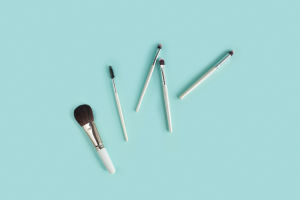Choosing the right shampoo is essential for managing oily hair. Excess oil on the scalp can lead to a greasy appearance, scalp discomfort, and even hair issues like dandruff.
A refreshing shampoo specifically designed for oily hair can effectively combat these problems and help maintain a clean, healthy scalp.
Understanding Oily Hair
Oily hair results from overactive sebaceous glands in the scalp that produce excess sebum, a natural oil meant to moisturize and protect the scalp and hair.
While sebum is necessary, too much of it can make hair look greasy and feel heavy. Factors like genetics, diet, hormonal changes, and using the wrong hair products can contribute to excessive oil production.
Why Choose a Refreshing Shampoo?
A refreshing shampoo is formulated to address the needs of oily hair. These shampoos typically contain ingredients that help control sebum production, cleanse thoroughly, and leave the scalp feeling fresh.
Unlike moisturizing or nourishing shampoos, which may be too heavy for oily hair, refreshing shampoos are lightweight and often infused with cooling or purifying agents.
Key Ingredients to Look For
When selecting a shampoo for oily hair, it’s important to pay attention to the ingredients. Look for these key components:
- Clarifying Agents: Ingredients like salicylic acid, tea tree oil, or witch hazel help remove excess oil, dirt, and product buildup from the scalp.
- Natural Astringents: Lemon, mint, or eucalyptus can help balance oil production while leaving a refreshing sensation.
- Volumizing Agents: Oily hair often appears flat and limp. Ingredients like silica or rice protein can add volume and lift to the hair.
- Sulfur or Zinc: These ingredients can regulate sebum production and prevent issues like dandruff.
Ingredients to Avoid
For oily hair, it’s best to avoid shampoos that are rich in heavy oils, silicones, or deeply moisturizing agents. Additionally, avoid shampoos with harsh sulfates, which can lead to a rebound effect where the scalp produces even more sebum.
Tips for Effective Use
- Wash Regularly: Depending on how oily your hair gets, you may need to wash it daily or every other day with a refreshing shampoo.
- Focus on the Scalp: When applying shampoo, concentrate on cleansing the scalp rather than the ends, as this is where oil production occurs.
- Rinse Thoroughly: Ensure all shampoo is washed out to prevent residue, which can make hair look greasy.
- Condition Wisely: Use a lightweight conditioner and apply it only to the mid-lengths and ends of your hair, avoiding the scalp.
Lifestyle Adjustments
Beyond choosing the right shampoo, making some lifestyle adjustments can help manage oily hair. Maintain a healthy diet rich in vitamins and minerals to promote scalp health.
Reducing stress levels can also minimize hormonal fluctuations that contribute to excess oil production.
Managing oily hair starts with choosing a refreshing shampoo tailored to your needs. By understanding your hair type and selecting the right products, you can keep your scalp clean and fresh, ensuring your hair looks its best every day.


